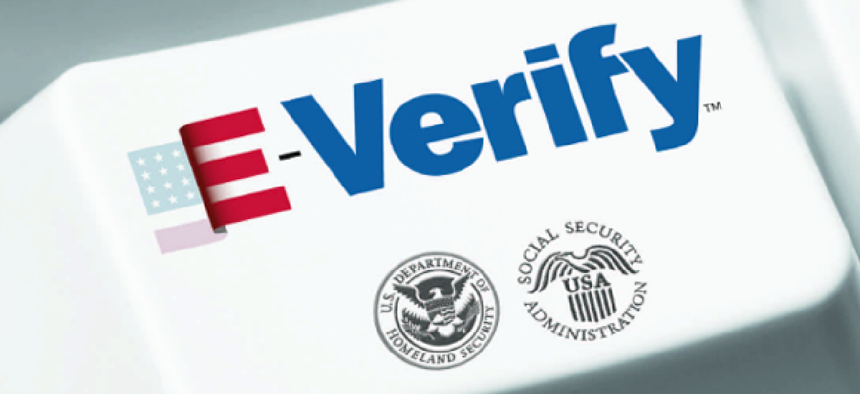USCIS builds up E-Verify

The U.S. Customs and Immigration Service is ensuring the program can scale if more employers are brought into the currently voluntary program.
The Trump administration wants to expand the E-Verify program that gives employers a way to check a potential employee’s employment eligibility online, calling for $15 million in additional funding with the intent to make the program mandatory for all employers.
The U.S. Customs and Immigration Service first piloted the E-Verify program in 1997, and has revised and improved the system repeatedly in 30 years since. The agency now is “streamlining the process and making it capable of scaling if we bring more employers” into the currently voluntary E-Verify system, CIO Mark Schwartz said at a conference earlier this month.
Efforts thus far include “delivering a modernized Status Verification System, which manages cases for those employees who are not found work authorized immediately,” a USCIS spokesperson said in an email. “Development is also focused on reducing data discrepancies and modernizing the enrollment process.”
“Mandatory E-Verify appears to be something that is coming,” said David Fowler, president of the E-Verify Employer Agent Alliance, an industry association that advocates for program improvements. “With the new administration in, I think they’re going to push for this.”
The E-Verify system currently requires employees to fill out hard-copy I-9 forms that are entered into an online website by the employer. The information is then run against databases at Department of Homeland Security, Department of State, Department of Justice and the Social Security Administration to verify that the employee is eligible to work in the U.S.
“Now, in a lot of cases, it doesn’t work so smoothly,” Schwartz said at the Know Identity conference in Washington D.C.
There are several things that can go wrong with the verification process: The employer can enter the information incorrectly, the data within the databases accessed by USCIS could also have discrepancies, Schwartz said.
Although less than 1 percent of all queries for work-authorized individuals contain data discrepancies, that still means there are tens thousands of people being held up due to issues within the system, according to an analysis by Cato Institute, a libertarian think tank.
Fowler, though, said this could have some benefits.
“Unless you use a database, you’re not going to find the errors and be able to correct them,” he said, adding that some of these errors could prevent people from collecting Social Security, so it is good that they’re caught early.





